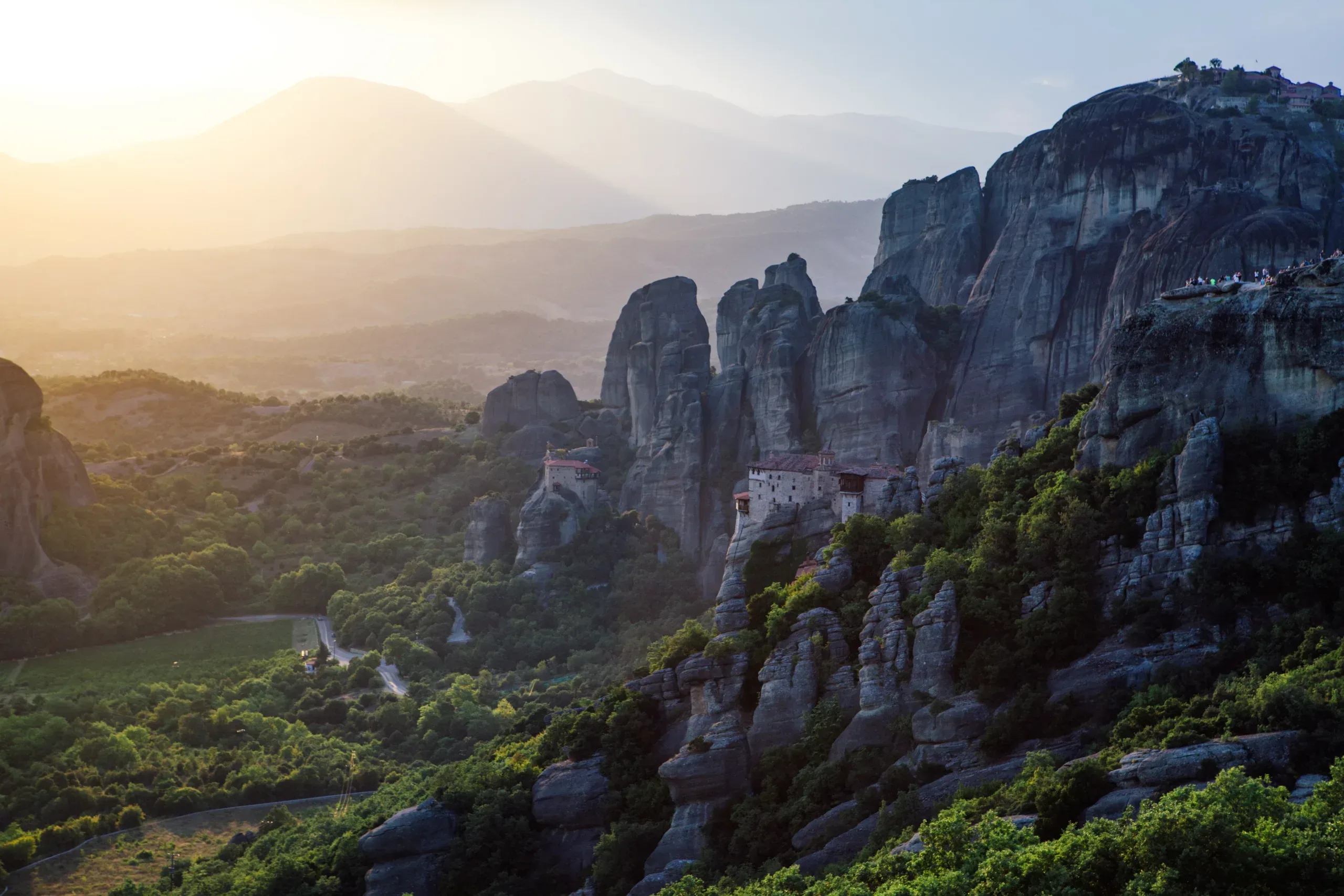Meteora is one of the most impressive and unique natural and cultural monuments of Greece and the entire world. It consists of a complex of dark-colored sandstone rocks that rise outside of Kalabaka, in the Trikala region of Thessaly, near the first elevations of Pindus and the Chasia mountains.
On the peaks and in the caves of these rocks, 20 monasteries were built from the 11th century onwards, of which only 6 are still in operation today. The monasteries of Meteora are now the second most important monastic complex in Greece, after Mount Athos, and they serve as a source of faith, prayer, and reverence for thousands of pilgrims and visitors.
This UNESCO World Heritage Site is a treasure of natural beauty, cultural heritage, and spiritual significance.
Where to Stay in Meteora

Like in most areas, we chose to book an Airbnb in Meteora, as it seemed the ideal and most economical choice for three people at that time. However, if you are looking for accommodation, I suggest checking the available options on Booking.com as well.
Apart from staying in a hotel, lodging, or private residence, there are also options for those interested in camping. One camping option is available in Kastraki, Trikala, just 1 km from Kalabaka and the train station. Although there are hotels available where you can book a room immediately upon arrival, it is recommended to do so in advance and online to ensure availability.
The main reason we chose to book our stay through Airbnb rather than a hotel was undoubtedly because we had our own house with a yard that had tables and chairs. It was also large enough to store our bikes with ease, and in the evenings, we enjoyed the cool breeze and the incredible view of Meteora.
However, our stay was not in Meteora but in Trikala. It was more convenient for us to commute back and forth, as we also enjoyed the city, especially in the evenings before returning to our Airbnb. In retrospect, we should have booked our stay in Meteora, as the accommodations there come with the corresponding beautiful natural views, something we did not have the luck to enjoy.
Meteora: Home to Six Active Monasteries
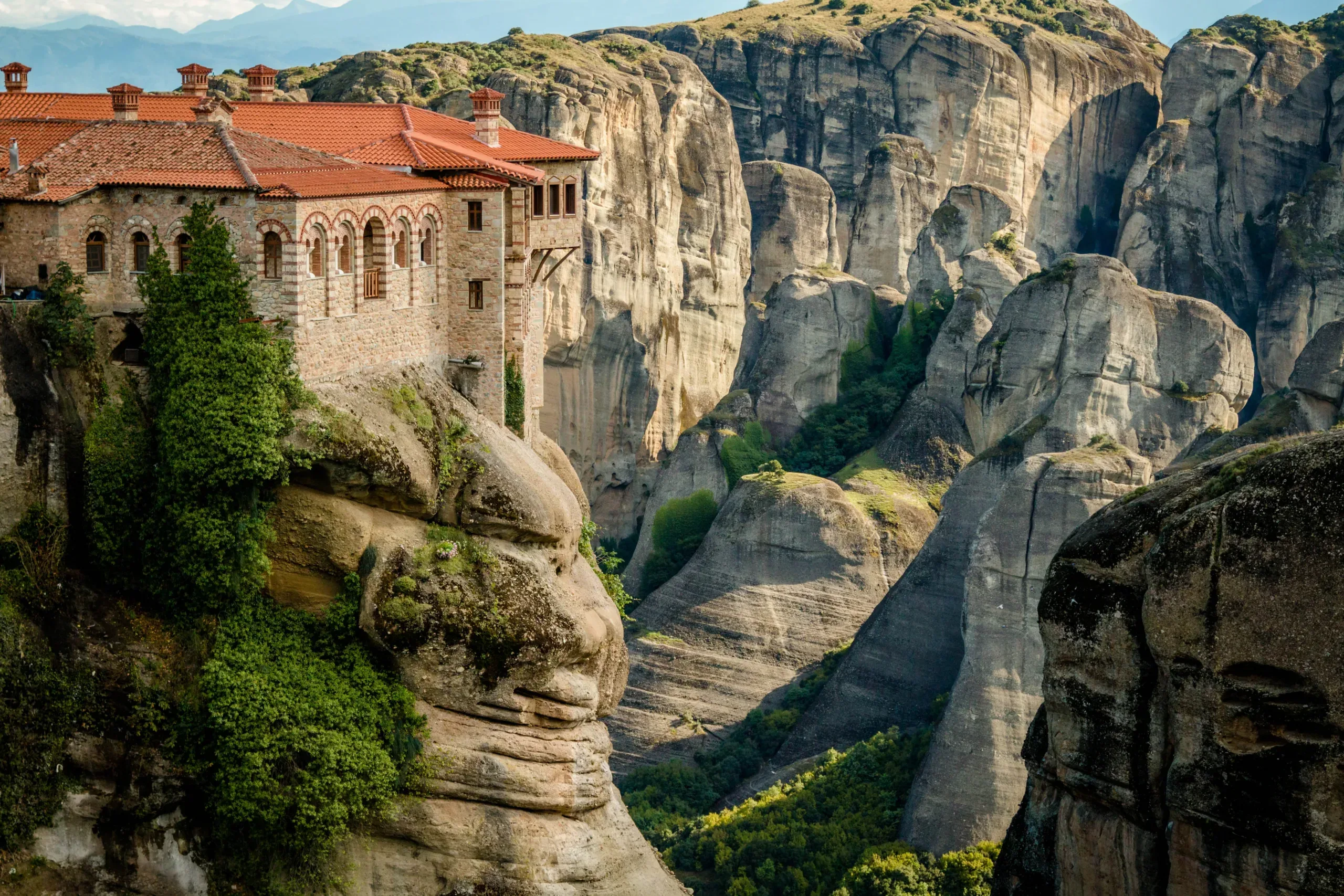
Meteora currently hosts six active monasteries, each precariously perched atop sandstone pillars that rise dramatically from the valley floor. For many who see them for the first time, it seems as though these monasteries have found a unique way to defy gravity.
The experience begins with an unforgettable exploration of these spiritual sanctuaries, which offer a better insight into monastic life, while being adorned with stunning frescoes, ancient relics, and tranquil courtyards. The largest and oldest monastery, however, is the Holy Monastery of Great Meteoron, which features unique architecture and a rich history dating back to the 14th century.
Visit the Holy Monastery of Saint Nicholas Anapafsas
This is a small chapel dedicated to Saint Nicholas Anapafsas, dramatically positioned on a high rock. Its frescoes and serene atmosphere make it a hidden gem worth exploring if you are in Meteora.
The Holy Monastery of Saint Nicholas Anapafsas is one of the six active monasteries in the Meteora region of Greece. It is situated on a solitary rocky formation, making it one of the most impressive and visually captivating monasteries in Meteora.
The exact date of the monastery’s founding remains uncertain, but it is believed to have been established in the 14th century. The name “Anapafsas” comes from the Greek word for “rest.” The monastery’s name is thought to be linked to the ancient hermitages and rest areas that existed in the region before the actual construction of the monastery.
Saint Nicholas Anapafsas Monastery is located atop a high and isolated rock, standing out from the main cluster of Meteora rocks. Its remote location and strategic position made it an ideal place for spiritual reflection and solitude. To access the monastery, visitors must climb a series of steps carved into the rock face, offering an exhilarating and rewarding experience.
The chapel of Saint Nicholas Anapafsas is relatively small and features a simple yet elegant architectural style. The interior of the chapel is adorned with beautiful frescoes dating back to the 16th century, depicting scenes from the life of Jesus Christ and various saints. These exquisite frescoes are a testament to the outstanding artistic heritage of the Byzantine era.
While the Monastery of Saint Nicholas Anapafsas is not as well-known as some of the larger Meteora monasteries, it is open to the public for visits during specific hours. As with all monasteries in the area, visitors are expected to dress modestly and respectfully.
Visit the Holy Trinity Monastery
The Holy Trinity Monastery is one of the most iconic and impressive monasteries in the Meteora region. Perched atop a steep rock, it has gained international fame and recognition, partly due to its appearance in the 1981 James Bond film “For Your Eyes Only.”
The exact date of the Holy Trinity Monastery’s founding is not well documented, but it is believed to have been established in the 15th century during the Byzantine era. The monastery has undergone significant renovations and expansions over the centuries, resulting in the imposing structure seen today.
The Holy Trinity Monastery is a masterpiece of architectural ingenuity, built on a narrow and jagged rocky column that rises high above the Meteora valley floor. Its location, at an altitude of about 400 meters (1312 feet), offers breathtaking panoramic views of the surrounding landscapes and other monasteries in the area.
To access the Holy Trinity Monastery, visitors must climb a series of steps carved directly into the rock. This steep ascent, consisting of approximately 140 steps, provides a sense of adventure and awe as visitors approach the monastery.
The main part of the monastery consists of the central courtyard, the chapel, the monks’ living quarters, and other essential facilities. The chapel is adorned with well-preserved frescoes depicting scenes from the life of Christ, various saints, and biblical narratives, representing the exquisite artistic heritage of the Byzantine era.
2. Go Hiking in Meteora
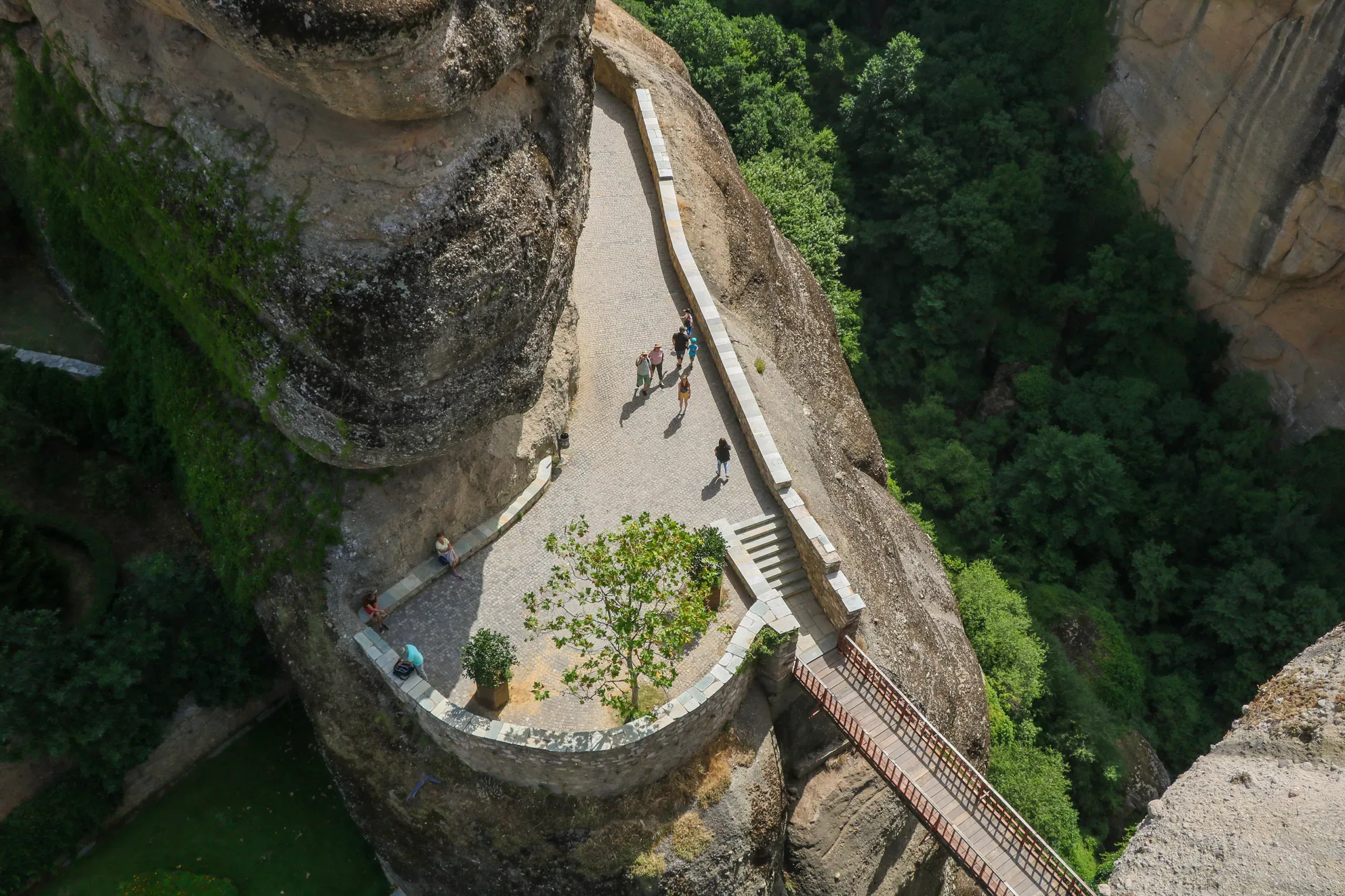
You could say that the hiking trails in Meteora create a network of well-marked paths that cater to various fitness levels and personal preferences. Whether you’re an experienced hiker looking for more challenging ascents or a leisurely walker constantly searching for scenic views, you will surely find a trail that you will love.
The trails in Meteora vary in length and difficulty, with some ranging from easy walks to more strenuous hikes that take you to the top of some of the tallest rock formations. So, make sure to wear your most comfortable shoes and get ready to traverse one of the most beautiful rocky landscapes on our planet.
Hiking in Meteora gives you access to some of the area’s hidden gems that are not easily reachable by other means of transport. During your hike, you’ll see secluded chapels, caves, and small monasteries hidden in the rocks, each with its own unique history and charm. These hidden treasures add an element of mystery and adventure to everyone’s hike.
3. Go Climbing
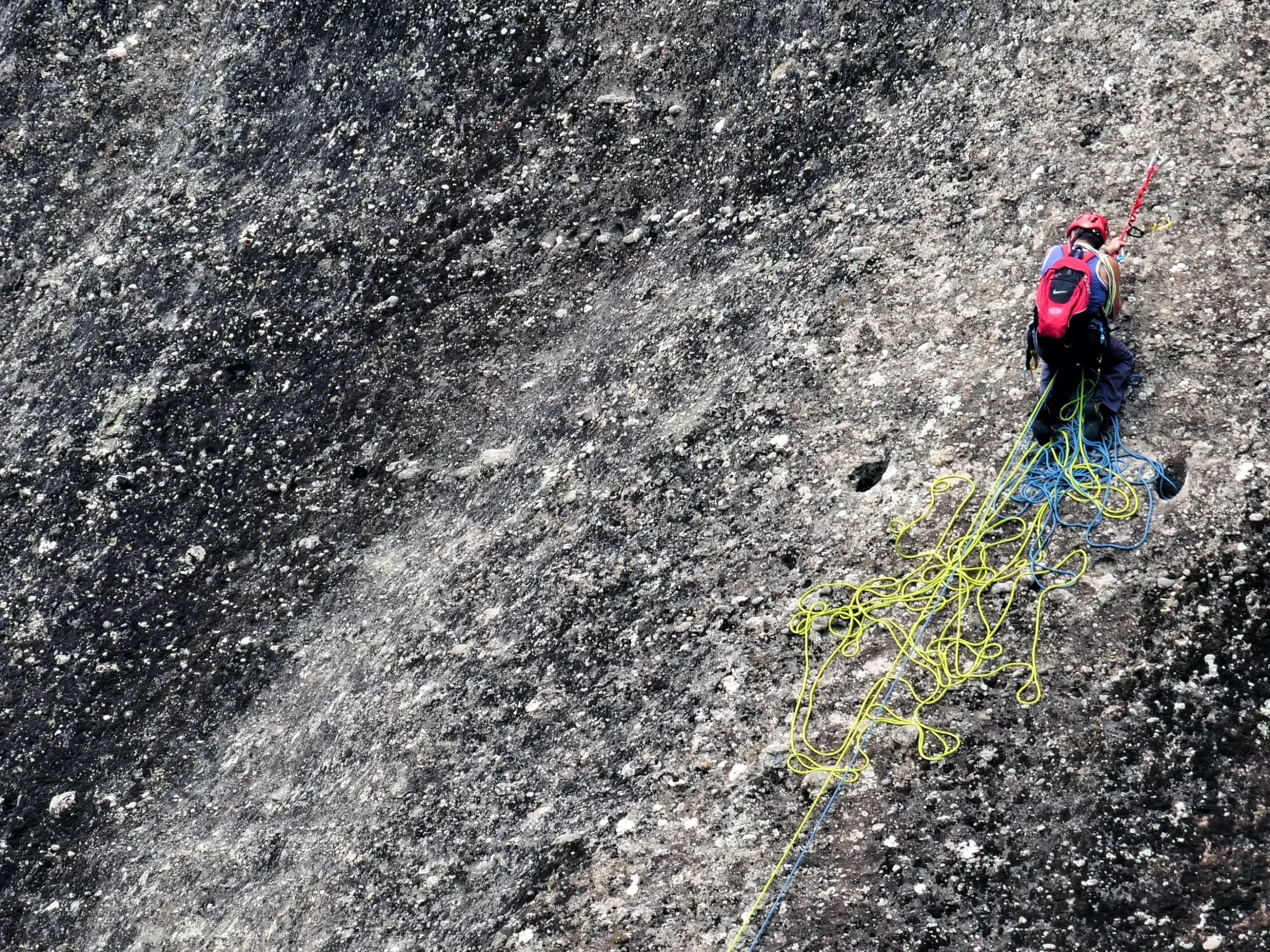
For the daring souls, climbing in Meteora is an exhilarating and unique experience that attracts climbers from all over the world. The area’s dramatic rock formations, combined with its spiritual and historical significance, make it a climbing destination like no other.
Meteora is renowned for its stunning sandstone rocks that rise dramatically from the valley floor. It took millions of years for these rocks to be shaped by the natural forces of our planet, creating this challenging, diverse, and fully climbable environment. The rocks offer a variety of climbing routes, including vertical faces, overhangs, and cracks that cater to climbers of all levels.
The climbing routes in Meteora range from beginner-friendly paths with lower difficulty grades to more advanced and technical climbs for experienced climbers. The area boasts more than 700 climbing routes, making it a climbing paradise with endless opportunities for exploration and challenges.
While Meteora is a destination you can visit any time of the year, the best time for hiking is in spring (April to June) and fall (September to November). The weather is milder during these periods, and the landscapes are adorned with blooming flowers or autumn foliage, adding even more beauty to the scenery.
For those new to climbing or unfamiliar with the Meteora area, hiring a local climbing guide is recommended. Experienced climbing guides can provide valuable insights into the best routes, ensure safety practices, and share stories about the geological and historical significance of the area.
Climbing tours cover different skill levels and can be customized to meet individual preferences and abilities.
4. Cycle on Beautiful Trails
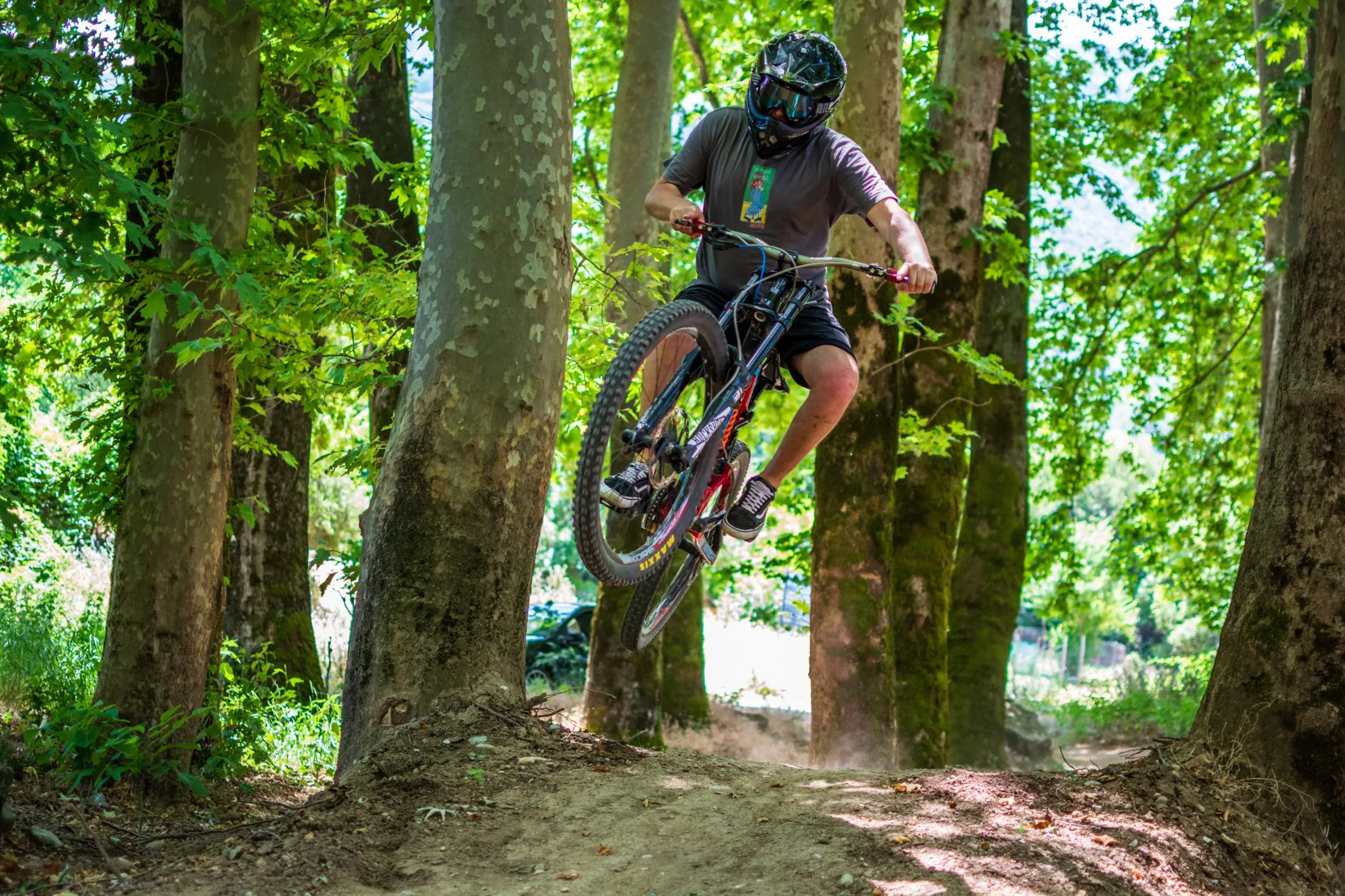
As a cyclist, I couldn’t help but mention the beautiful trails we had the pleasure of riding with our bikes. If you’re a cyclist and considering loading your bike into your car for an extreme yet beautiful experience, there are several trails you can visit.
Specifically, we were three people with three different bikes. More precisely, we had one downhill and two hard-trails with us, one of which had front suspension with 100mm travel, meaning that with a bit more experience, you can ride down all the trails with relative ease.
To fully enjoy the experience, we first got in touch with the Meteora e-Bike shop, which took us up with a special jeep, showing us each of the available trails and taking us up again and again. Their hospitality was unique, suggesting places to visit and where we could try the local cuisine. The lovely Jenny welcomed us upon our arrival at the shop, while the kind Vasilis was our driver for the day.
Just 7-10 minutes outside Kalabaka, there is a track called “D-Trails,” which includes some excellent jumps to enjoy your time. Since all the jumps are in one specific spot, you can park your car just a few steps away and enjoy an extreme rest of the day.
5. Try the Local Cuisine

No matter which area you visit, indulging in the delightful local cuisine should undoubtedly be one of the must-dos on your travel to-do list. There are several taverns where you will have the opportunity to try Greek dishes and enjoy the warm hospitality of the local people.
The local cuisine in Meteora reflects the traditional flavors of Greek gastronomy, with an emphasis on fresh and local ingredients. Exploring the charming towns surrounding the monasteries, visitors will find a range of taverns and restaurants offering delicious dishes that showcase the culinary heritage of the area.
Ask them to prepare anything you’ve never tried before and anything considered local, allowing your stomach to experience the full journey of Meteora. For foreign tourists, local foods typically include moussaka, pastitsio, souvlaki, Greek salad, baklava, saganaki, and kleftiko.

